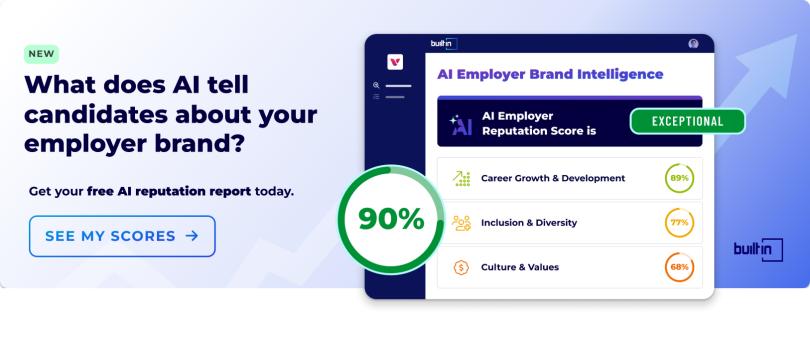Before we get going, let’s set the stage with a few fun facts. Since 2000, three different actors have played the role of Spider Man on the big screen. Another three have portrayed the Incredible Hulk, while two of the world’s most recognizable leading men have shared the mantle of Batman.
What can we learn from this cinematic romp down memory lane (aside from the fact you likely have a different definition of fun facts)?
- Hollywood loves a reboot. Though in Tinsel Town’s defense, it would be odd if the now 41-year-old Tobey Maguire were still portraying young Peter Parker.
- Like your favorite comic book franchise, your tech recruiting strategy can also benefit from the occasional refresh.
Whether your current approach is no longer delivering adequate results or you’re trying to take your recruiting efforts to even greater heights, there is always room for improvement. In that spirit, we’re here to help with three no-nonsense tips for any organization looking to reboot its tech recruiting efforts.
See how your employer brand is performing in AI tools like ChatGPT and Google.
1. START WITH YOUR METRICS

To say that which gets measured gets done may ring hollow in the age of big data, but it’s a time-tested mantra that bears repeating. When rebooting your tech recruiting efforts, developing an understanding of your performance metrics should be your top priority.
Identifying the areas in which you wish to improve, benchmarking your current state and creating a measurement plan are surefire methods for gathering the empirical evidence you need to gauge the progress of your recruiting efforts, but few organizations embrace this approach. Here are a few ideas to get you started, but remember; the metrics you benchmark and track should always be determined by your organizational goals:
- Time - Hiring timelines are getting longer, and this issue is even more prevalent in the world of technical recruiting. It now takes an average of 35 days to hire a software engineer, and as time-consuming screening methods continue to proliferate, we can expect this number to grow. Tracking average time-to-hire can help you manage timelines and identify inefficiencies in your process.
- Cost - Understanding your cost-per-hire is critical for monitoring the financial health of your recruiting efforts, and calculating your cost of vacancy will allow you to prioritize hires and set expectations (more on that in a minute).
- Quality - Making a hire quick and on the cheap may check-off some of your requirements, but if the result is a candidate that will be gone in a few months, you’ve done yourself a disservice. If recruiting long-term team members is a priority for your organization, understanding quality of hire should be at the top of your to-do list. There are many ways to go about this - retention and turnover rate being two of the most common - so identify your metric of choice and get busy tracking.
2. SET REALISTIC EXPECTATIONS

A recruiter’s job is hard enough on a good day, but when internal stakeholders aren’t on the same page, things can really get out of hand. Setting realistic expectations upfront can avoid the tooth gnashing and finger pointing that result from arguments over candidates, timelines and costs, but it requires a little legwork.
The “R” word makes many of us cringe, but conducting a bit of research can go a long way toward helping internal stakeholders understand what the recruiting process will look like. Consider looking into:
- Your competitive landscape - Do other companies have open listings for similar positions? What do their benefit packages look like? How does your reputation stack up against rival firms?
- The candidate pool - How many available candidates meet your needs? Will you have to source passive candidates? Will you have to relocate a candidate from out of town?
- Salary requirements - What is the organization willing to pay? How does this compare with other listings on the market? Are you willing to negotiate with the right candidate?
Job boards and sourcing databases will help you understand the competitive landscape and available talent pool, and a quick Google search will return a bevy of helpful salary guides. We think ours are pretty great (shameless plug), but choose whichever meets your needs.
3. LEVERAGE YOUR HIRING MANAGER

No one feels the impact of a vacant position like the hiring manager. Aside from taking an active role in the hiring process, they’re trying to ensure an understaffed and overworked team is meeting its obligations. As cruel as it may feel to heap even more work on their plate, your tech recruiting reboot depends on the sort of insight only your hiring manager can provide through one-on-one feedback.
When you sit down with the hiring manager, be sure a few key areas are covered. What, exactly, does the position look like? What sort of skill set will the ideal candidate possess? What prior experience should they have? What will the candidate be responsible for should they accept an offer? Your list may be longer, but ensuring the basics are covered before you create a job listing will increase the odds of landing the right candidate on the first try.
TAKEAWAYS
So what does it take to reboot your tech recruiting efforts? Thankfully, a complete overhaul is rarely necessary.
- Metrics. Set benchmarks and measure the performance of the KPIs most important to your organization.
- Set realistic expectations. Do a little research before meeting with internal stakeholders to help align expectations.
- Leverage your hiring manager. Utilize the individual responsible for managing the new hire to develop a clear understanding of the role being listed.
A few smart tweaks can pay big dividends in the form of improved performance, increased cooperation and better hires. Those are results everyone in the organization can be happy with.




